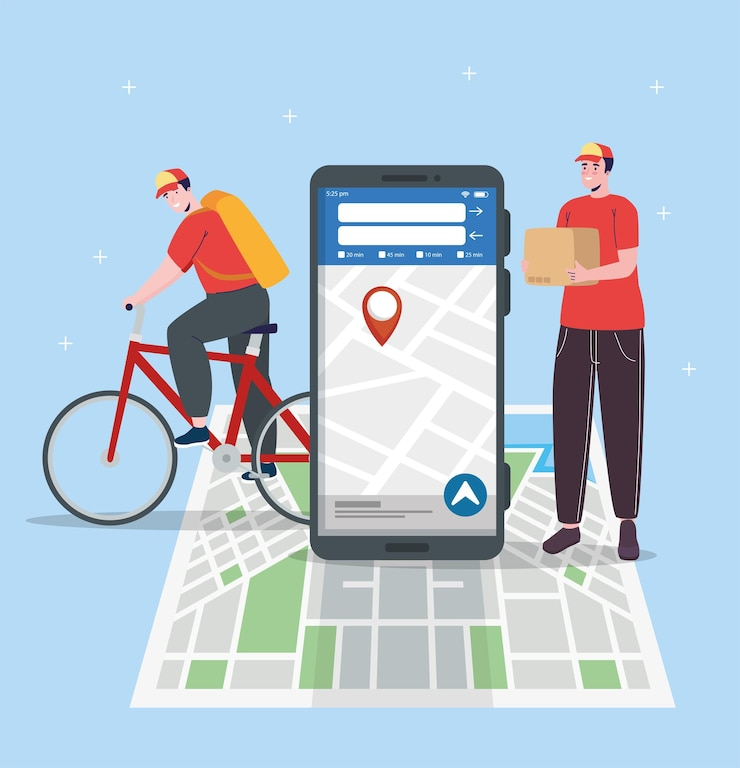Developing a successful multi-service app like Gojek requires careful consideration of the underlying technologies. A Gojek clone needs to deliver a seamless experience for users, handle multiple services efficiently, and scale with business growth. To achieve this, choosing the right technologies is crucial. This blog explores the five key technologies essential for building a robust and scalable Gojek clone app.
Understanding the Importance of Technology in Gojek Clone Development
When developing a Gojek clone, it is vital to select the appropriate technology stack that ensures the app runs smoothly, securely, and efficiently. These technologies power the front-end, back-end, databases, APIs, and other key components that contribute to the overall functionality and user experience of the app. The right combination of technologies helps provide a seamless experience for users, service providers, and administrators while keeping the app scalable and flexible for future growth.
In this blog, we will look at five key technologies that play an important role in building a successful Gojek clone app.
Front-End Technologies
Mobile App Development Frameworks
The front end of a Gojek clone app is responsible for delivering an intuitive user interface and a smooth user experience. Choosing the right mobile development framework ensures the app performs well on both Android and iOS devices. Some of the most popular mobile frameworks used for building a Gojek clone include React Native and Flutter. These frameworks allow developers to create cross-platform apps with a single codebase, reducing development time and cost.
React Native, developed by Facebook, is an open-source framework that allows developers to build apps for both Android and iOS using JavaScript. Flutter, developed by Google, uses the Dart programming language and offers highly customizable widgets to create visually appealing interfaces. Both frameworks enable faster development cycles and ensure high performance, making them suitable choices for multi-service apps like a Gojek clone.
UI/UX Design Tools
A crucial aspect of the success of a Gojek clone is its user interface and user experience. An attractive, easy-to-navigate interface can significantly improve user engagement and retention. Tools like Figma, Sketch, and Adobe XD are commonly used to design the UI/UX of mobile applications. These design tools enable developers and designers to collaborate, create wireframes, and develop interactive prototypes, ensuring the app’s interface is user-friendly.
By using these design tools, developers can create responsive and interactive designs that offer a seamless experience across different devices and screen sizes. The right UI/UX design tools ensure that the Gojek clone app looks modern and is easy to navigate, thus enhancing the overall user experience.
Back-End Technologies
Server-Side Technologies
The back end of a Gojek clone is responsible for handling all server-side processes, including user authentication, data management, service provider integration, and payment processing. To ensure that the app operates smoothly, it is important to choose a robust back-end technology stack.
Node.js and Ruby on Rails are two popular back-end frameworks used for building Gojek clone apps. Node.js is a JavaScript runtime environment that is known for its ability to handle multiple requests efficiently. Its non-blocking, event-driven architecture makes it ideal for developing real-time applications like a Gojek clone. Ruby on Rails, on the other hand, is a web application framework written in Ruby, known for its simplicity and speed in building server-side applications.
These back-end technologies help manage high volumes of requests from multiple users and ensure that the app can scale easily to accommodate growing user demand.
Database Technologies
Database Management Systems
The database is the backbone of any app, storing crucial data such as user profiles, transaction history, service details, and more. For a Gojek clone, it is essential to use a reliable and scalable database management system (DBMS) that can handle a large amount of data without compromising performance.
Popular choices for databases include MySQL, PostgreSQL, and MongoDB. MySQL and PostgreSQL are relational databases that provide structured query capabilities, making them ideal for storing transactional data. MongoDB, a NoSQL database, offers flexibility in handling unstructured data and is suitable for dynamic, real-time applications.
These databases provide the necessary infrastructure to manage user data efficiently and ensure that the app runs smoothly even with high data loads. Selecting the right database technology is key to maintaining the integrity and performance of a Gojek clone app.
Cloud and APIs
Cloud Infrastructure and APIs
To ensure scalability and flexibility, many developers prefer to host Gojek clone apps on cloud platforms such as Amazon Web Services (AWS), Google Cloud Platform (GCP), or Microsoft Azure. These cloud services offer features like auto-scaling, load balancing, and data security, which are essential for handling a high number of requests and ensuring the app remains stable under heavy traffic.
APIs (Application Programming Interfaces) are another crucial component when building a Gojek clone. APIs allow the app to communicate with third-party services such as payment gateways, geolocation services, and social media platforms. RESTful APIs and GraphQL are two commonly used API architectures that enable seamless data exchange between different systems. Payment integration APIs, like Stripe or PayPal, help facilitate secure transactions within the app, while map APIs provide accurate geolocation data for users and service providers.
By leveraging cloud services and APIs, developers can ensure that the Gojek clone app is scalable, and secure, and offers various functionalities that improve the user experience.
Conclusion
Building a Gojek clone app requires an on-demand app development company to carefully select various technologies to ensure its success. From mobile frameworks like React Native and Flutter to backend solutions such as Node.js and Ruby on Rails, every technology contributes to delivering a seamless user experience. Reliable database management systems, cloud infrastructure, and APIs are crucial for scalability and performance, providing connectivity to third-party services. Integrating these technologies is key to developing a Gojek clone that meets the needs of users and service providers while preparing for future growth and expansion.
